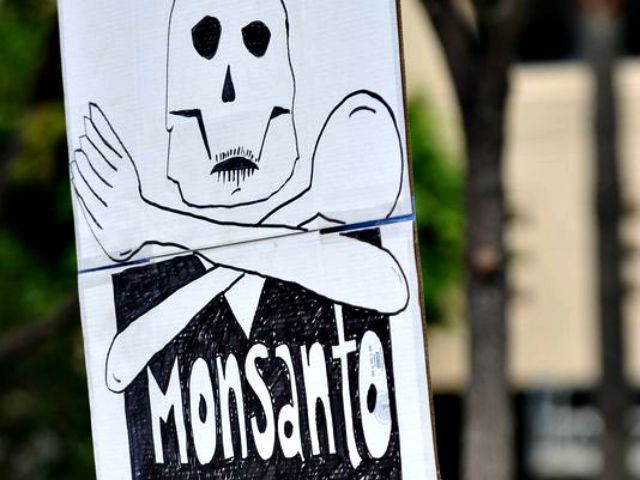California’s office of Environmental Protection issued a “notice of intent” to label Monsanto’s highly effective ‘Roundup’ weed herbicide’s key ingredient glyphosate as a cancer causing compound.
Following the World Health Organization cancer research division’s report of ingredients known to cause cancer, the Cal EPA has decided to officially put Roundup’s active ingredient on a list of chemicals hazardous to human health under the state’s ‘Safe Drinking Water and Toxic Enforcement Act of 1986.’ The change will require Monsanto to add a “clear and reasonable” warning that its chemical compound is a threat to human life.
The action comes after WHO’s ‘Agency for Research on Cancer (IARC)’ in March classified glyphosate as being “probably” carcinogenic to humans. Monsanto immediately launched a campaign to dispute any link to cancer in one of their best selling products since 1974.
Glyphosate is a broad-spectrum herbicide used to kill weeds, especially annual broadleaf weeds and grasses known to compete with commercial crops. Monsanto in 2013 received approval from the Obama Administration’s US Environmental Protection Agency (EPA) for the use of glyphosate, claiming the product is health and environment safe, which has since become part of Roundup’s advertising campaign.
Plants absorb glyphosate through their leaves and the chemical moves to the growing points of shoots and roots, where it interferes with the enzymatic production of certain amino acids that are essential for plant growth. The pathway exists only in plants, fungi and bacteria, so the toxicity to animals had been considered very low.
There have been numerous unscientific claims about glyphosate, including the Center for Food Safety’s decade long claim that ‘Roundup’ in US farmland and backyards caused a 90-percent drop in the population of monarch butterflies. Australian TV claims that glyphosate contaminates mother’s milk.
But in March, an international group of scientists released a study for WHO connecting the long-term intake of Monsanto’s herbicide to kidney and liver damage, even in small exposure. But the evidence was considered controversial, since it was taken from a review of exposure, mostly agricultural, in the United States, Canada, and Sweden from selective studies that were published since 2001.
“More than 250 million pounds of glyphosate are used each year in the United States, and the science is clear that it’s a threat to public health and countless wildlife species,” said Dr. Nathan Donley, a staff scientist with the Center for Biological Diversity. “It’s long past time to start reining in the out-of-control use of glyphosate in the United States,” he added.
With the California EPA’s Office of Environmental Health Hazard Assessment filing its “notice of intent to list” for glyphosate as a known cancer agent, the public will have until October 5th to comment. There are no restrictions on sale or use restrictions associated with the listing.
Last week an appeals court in Lyon, France, upheld a 2012 ruling in favor of farmer Paul Francois, who claimed he had been chemically poisoned and suffered neurological damage after inhaling Monsanto’s weed killer, ‘Lasso’. Monsanto plans to take its appeal to the highest court in France.

COMMENTS
Please let us know if you're having issues with commenting.